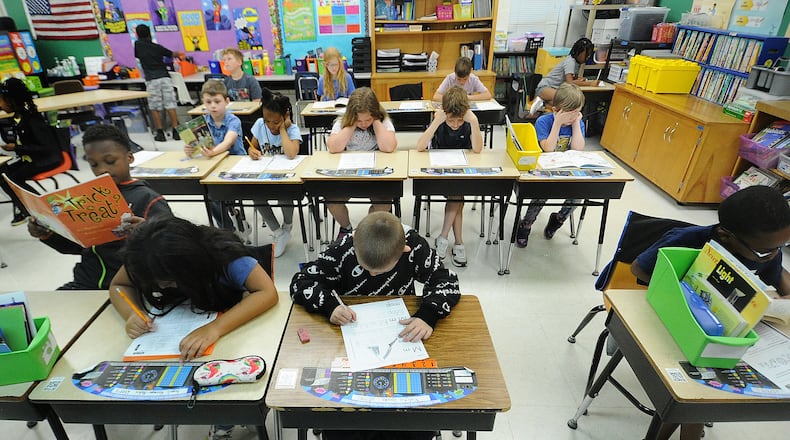Many school levy requests fail
In May and November, multiple school districts had large school levies on the ballot. Most of the school levies did not pass.
Vandalia-Butler and Northmont requested money from voters in both May and November and were voted down both times.
Centerville requested money in November but was voted down.
Mad River and Huber Heights asked for money in May, but after reforms to the way the state funds schools in the summer, both districts left levies off the ballot in November.
Schools are facing the end of COVID-19 relief funding next school year but are still dealing with academic and behavioral problems that cost the districts money to address. They are also dealing with shortages in several staffing areas, including paraprofessionals, bus drivers and teachers.
School funding changes
Over the summer, the Ohio legislature made a major change to school funding. Both private and public schools received a large increase in the amount of money the state would provide.
Traditional public schools received an estimated $1.54 billion increase in funding, a 12% increase.
But for private schools, more families qualified for vouchers. Students whose family make up to 450% of the poverty line — $135,000 for a family of four — can get a full voucher under income guidelines. Previous income guidelines included anyone who made up to 250% of the poverty line.
High school students can now get up to $8,407, and kindergarten through eighth grade students can get up to $6,165.
It still isn’t completely clear how much the state will pay for private school education now that more students qualify, but the initial cost estimate from the Ohio Legislative Service Commission, a government agency that analyzes Ohio Legislature bills for fiscal effects, was around $2 billion in the next two years.
Changes to Ohio’s oversight of schools
During the summer, the Ohio Statehouse changed the way education is overseen in the state. Most of the former duties of the Ohio Department of Education, overseen by the State Board of Education, transferred to the Ohio Department of Education and Workforce, which is overseen by the governor’s office.
In October, seven members of the state board of education sued the state legislature and the governor’s office to try to stop the move of duties from the board of education to the governor’s office. Ultimately a judge ruled that the department could be created while the lawsuit was ongoing.
The State Board of Education retains some powers, mostly over teacher licensing, but no longer can make decisions about what schools will be teaching students.
Struggle to find and retain staff
Schools are continuing to struggle to find staff, but many staff members also report burnout and poor working conditions.
Before school started, some teachers said the additional pressures of the pandemic have led them to leave. Schools are still heavily recruiting bus drivers. Most in-demand this year were paraprofessionals, who have an associate degree in education and can assist teachers with students.
Book challenges continue
School districts and libraries have come under increased scrutiny for what books students are allowed to access. Last year was a record year for book bans, with more than 1,200 challenges recorded by the American Library Association in 2022, nearly double the total in 2021, which set a record at the time.
The Dayton Daily News found only a few instances of books that were challenged and removed in the area, but more schools reported people challenging the books.
Books by or about people of color and by or about LGBTQ+ people are the most challenged.
Scholastic book fairs were challenged in the fall, but no local school reported any problems with books.
About the Author

